Understand common types of integrated circuits and their applications
2024/12/17 16:57:53
Views:
Integrated circuits (ICs) are the core component of modern electronic devices, which dramatically improve the performance, reliability and integration of devices by integrating multiple electronic components on a small semiconductor chip. There are many types of ICs, which are widely used in various fields of electronic technology. Whether it is digital, analog, or mixed-signal circuits, each type of IC has its own unique characteristics and application scenarios.
Types of IC | IC Packages | SMD vs DIP ICs | Integrated Circuit Mounting Styles | SMD IC Types | DIP
Table of Contents
- What is an Integrated Circuit?
- Integrated Circuit Facts
- Integrated Circuit Types
- 1. Digital Integrated Circuits
- 2. Analog Integrated Circuits
- 3. Operational Amplifier Integrated Circuit
- 4. Mixed-Signal Integrated Circuits
- 5. Memory Integrated Circuit
- 6. Communication Integrated Circuit
- 7. Photonic Integrated Circuit
- 8. Electronic Integrated Circuit
- 9. Semiconductor Integrated Circuit
- Sum up
- Frequently Asked Questions
What is an Integrated Circuit?
Integrated circuits (ICs) are a collection of electronic components that integrate a large number of electronic components, such as transistors, resistors, capacitors, etc., onto a small chip through miniaturization technology and advanced semiconductor processes. ICs are widely used in computers, cell phones, home appliances, automobiles and other electronic devices, assuming a variety of important functions such as signal processing, data transmission, control operations. The design and manufacturing technology of integrated circuits has experienced the evolution from small-scale integration (SSI) to large-scale integration (LSI) to very large-scale integration (VLSI).
Integrated Circuit Facts
The advent of integrated circuits (ICs) has fueled the revolution in electronics and provided a strong support for various technological developments. Here are some key facts about ICs:
VLSI (Very-Large-Scale Integration): Very Large-Scale Integration technology that enables integrated circuits to integrate thousands of transistors on a single chip, increasing the level of integration, speed of computation, and functionality of the system.
ASIC (Application-Specific Integrated Circuit): Specialized integrated circuits, tailored for specific applications, providing highly efficient, low-power solutions.
FPGA (Field-Programmable Gate Array): Field-programmable gate arrays allow users to program circuits according to their needs, and are widely used in prototyping, computational acceleration, and other fields.
CMOS (Complementary Metal-Oxide-Semiconductor): Widely used in the manufacture of integrated circuits, with the advantages of low power consumption, low noise and high speed.
Integrated Circuit Design (IC Design): IC design is the core of modern electronic product development, involving circuit structure, layout design and manufacturing process and other aspects.
With the continuous progress of integrated circuit technology, future ICs will develop in the direction of higher integration, lower power consumption and stronger performance, continuing to promote scientific and technological innovation and industrial progress.
Integrated Circuit Types
There are many types of integrated circuits, each designed for specific functions and applications. The following are common integrated circuits.
1. Digital Integrated Circuits
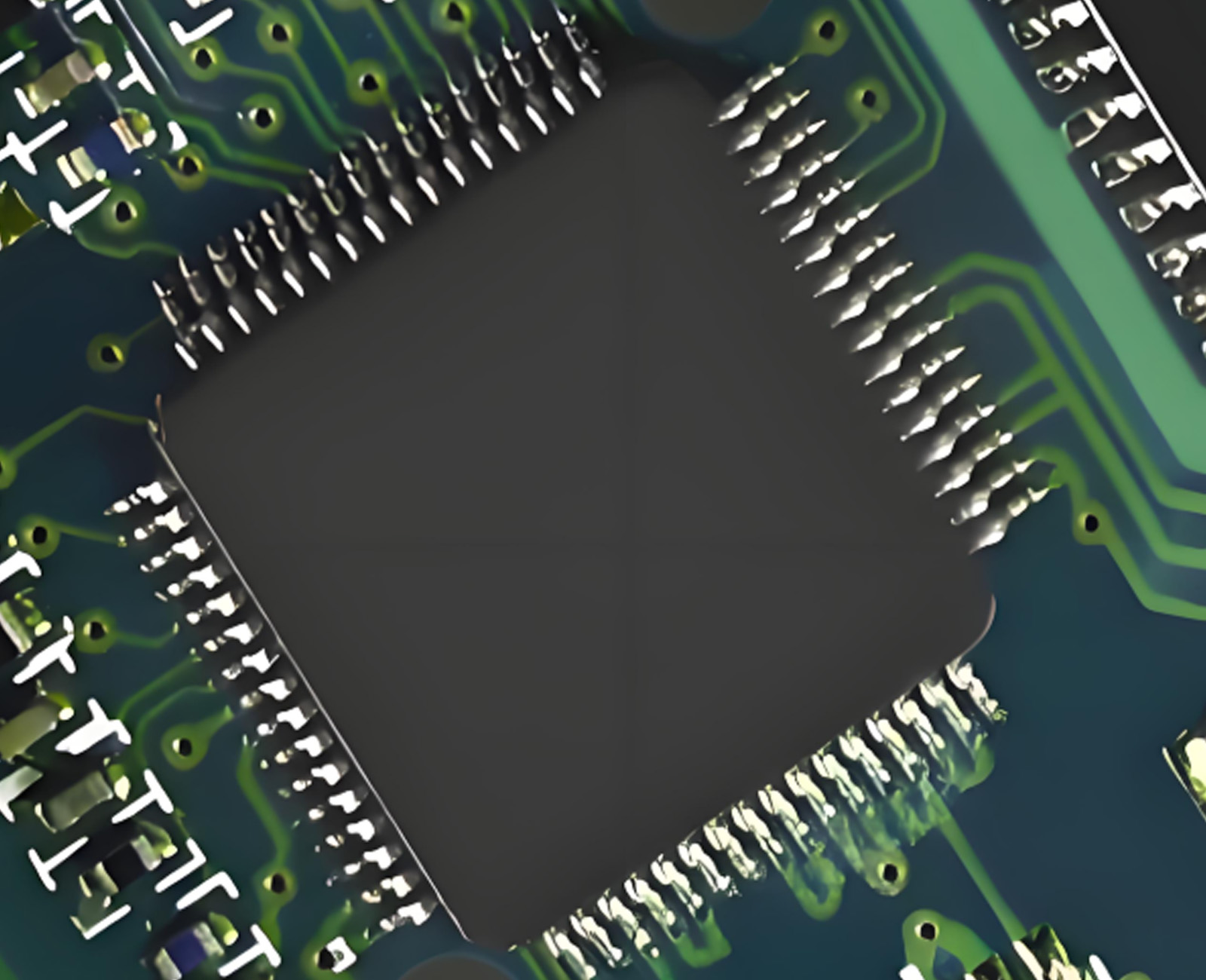
Digital Integrated Circuits
Digital integrated circuits are used to process discrete digital signals. Digital integrated circuits work on the basis of binary signals (0's and 1's) and perform tasks such as arithmetic and logical judgment.
Main features and applications
Digital Integrated Circuits Related Technologies
CMOS(Complementary Metal-Oxide-Semiconductor)
Advantages include low power consumption (Dynamic Power Consumption) and high integration density.
Used in ASIC (Application-Specific Integrated Circuit) and FPGA (Field-Programmable Gate Array).
VLSI(Very-Large-Scale Integration)
Includes SoC (System on Chip) designs that integrate the processor, memory, and communication modules into a single chip.
Process node evolutions such as 7nm, 5nm, and 3nm, with performance enhancements through FinFETs (finned field effect transistors).
Related Models
Intel Core i9-13900K: 13th generation Core processor with Intel 7 process and 24 cores for high performance desktop systems.
AMD Ryzen 9 7950X: Based on Zen 4 architecture, 5nm process, 16 cores for desktop high-end computing.
Texas Instruments SN74HC00: Basic logic gate circuits for general purpose digital logic design.
1.1 Microprocessors
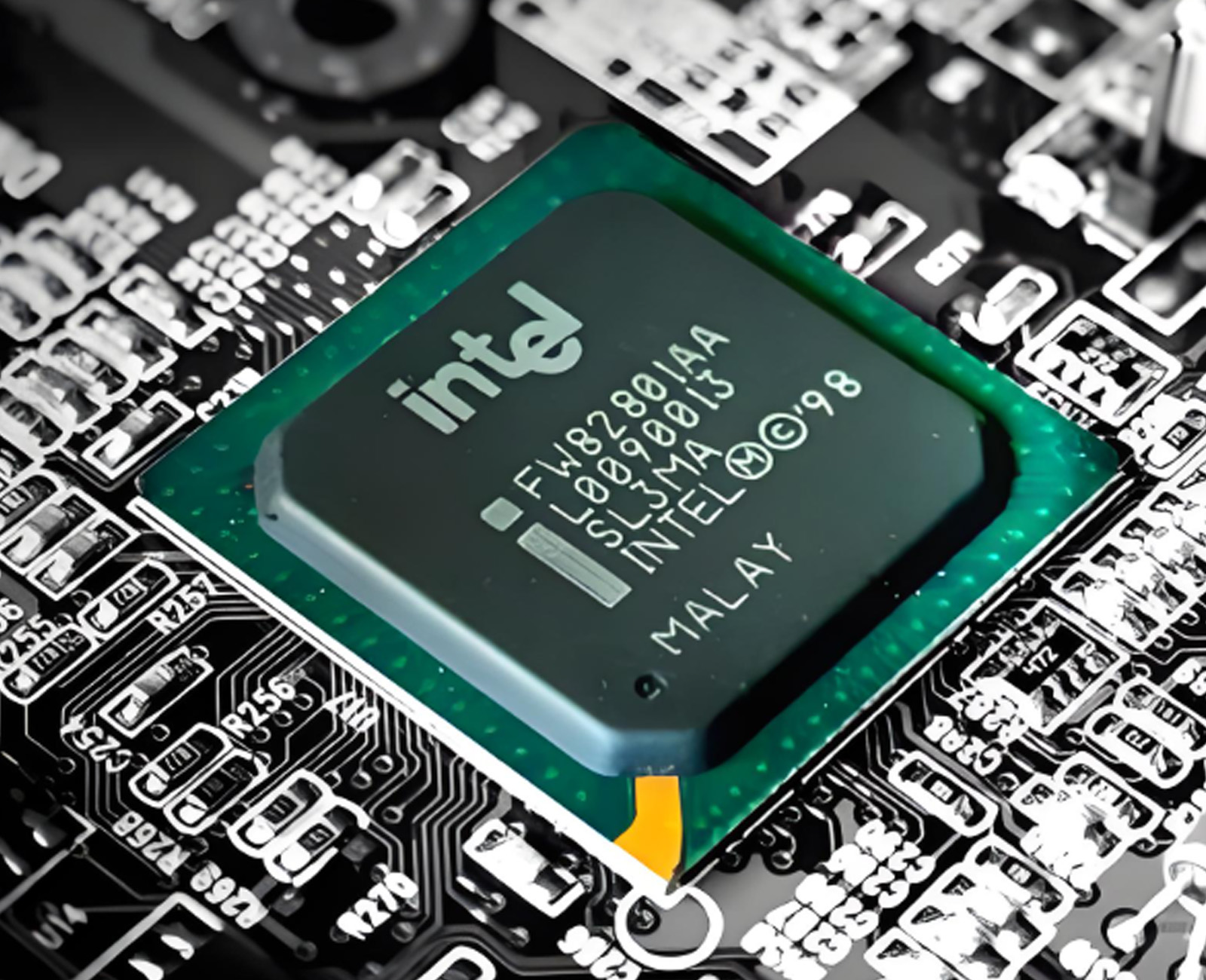
Microprocessors
A microprocessor is one of the digital integrated circuits that executes instructions in a computer program and processes data. Modern microprocessors improve computational performance by integrating a large number of computational units.
Main features and applications
Microprocessors Integrated Circuits Related Technologies
Multi-Core Architecture
This includes symmetric multiprocessing (SMP) and asymmetric multiprocessing (AMP).
Supports NUMA (Non-Uniform Memory Access) architecture to improve multi-core system efficiency.
Instruction Set Architecture
These include CISC (Complex Instruction Set Computing) and RISC (Reduced Instruction Set Computing).
Such as x86 architecture and ARM architecture for high performance computing and mobile low power scenarios respectively.
Related Models
ARM Cortex-A76: Based on RISC architecture, widely used in mobile devices and embedded systems.
Intel Core i7-12700H: 12th generation Core mobile processor for high-performance laptops.
Raspberry Pi RP2040: Efficient dual-core microprocessor with programmable I/O support for IoT device development.
1.2 Microcontrollers

Microcontrollers
Microcontrollers are highly integrated monolithic integrated circuits that incorporate a processor, memory, input/output interfaces, and other functions for control applications.
Main features and applications
Microcontrollers Integrated Circuits Related Technologies
Real-Time Operating System(RTOS)
Microcontrollers integrate RTOS for real-time task scheduling, such as FreeRTOS, Zephyr.
Supports Interrupt Priority and low latency processing.
Power Optimization Technology
Includes DVFS (Dynamic Voltage and Frequency Scaling) and Deep Sleep modes to reduce energy consumption.
Integrated PMU (Power Management Unit) to dynamically adjust the power state.
Related Models
STM32F407: 32-bit ARM Cortex-M4 core microcontroller, widely used in industrial control and embedded devices.
Microchip PIC16F877A: 8-bit microcontroller for educational, appliance and industrial applications.
Atmel ATmega328P: Core microcontroller for the Arduino Uno development board for introductory embedded development.
1.3 Counter Integrated Circuit

Counter Integrated Circuit
Counter Integrated Circuits are used to count external pulse signals and are classified into synchronous and asynchronous types, commonly binary counters and decimal counters.
Main features and applications
Counter Integrated Circuits Related Technologies
Multi-Mode Counter
Supports Up/Down counting modes for digital clocks and Frequency Dividers.
Synchronous Counter
The fully synchronized clock design reduces timing error and is widely used in high speed logic circuits.
Related Models
CD4060: 14-stage binary counter with internal oscillator for timer and clock circuits.
SN74LS93: 4-bit binary counter, widely used in digital counting applications.
1.4 Flip-Flop Integrated Circuit
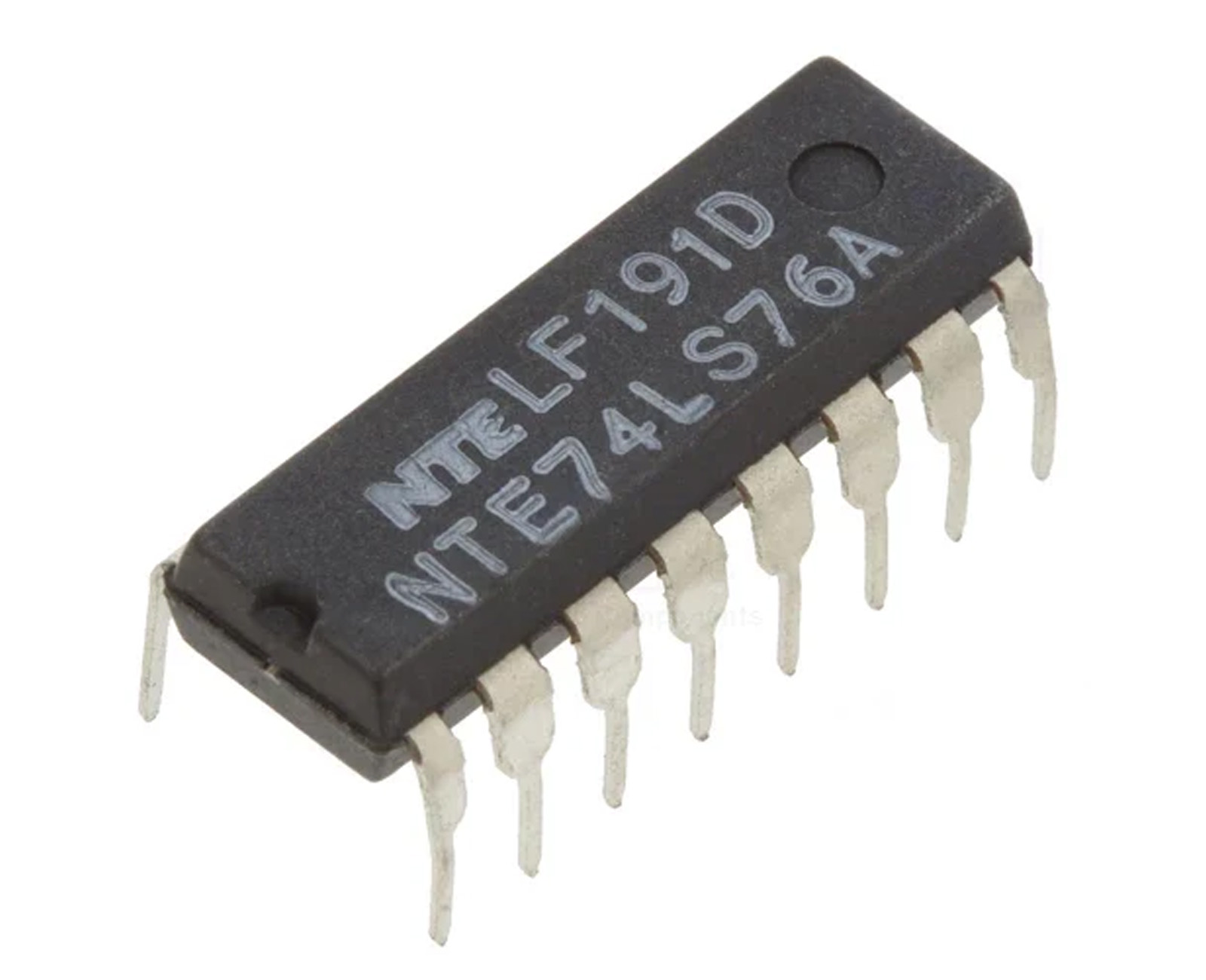
Flip-Flop Integrated Circuit
Flip-flop integrated circuits are used to store binary information (0 or 1) and are used to synchronize and store control signals.
Main features and applications
Flip-Flop Integrated Circuits Related Technologies
Edge-Triggered Flip-Flop
It operates according to the rising or falling edge of the clock signal and is suitable for high-speed signal sampling.
Logic Optimization
Includes Set/Reset function to optimize timing logic circuit performance.
Related Models
74LS74: Dual D-type Flip-flop for digital timing circuits.
CD4013: Dual D-Type Flip-Flop for counter, memory and data synchronization applications.
74HC112: Dual JK Flip-flop, supports asynchronous reset, suitable for timing logic circuit design.
1.5 Multiplexer Integrated Circuit
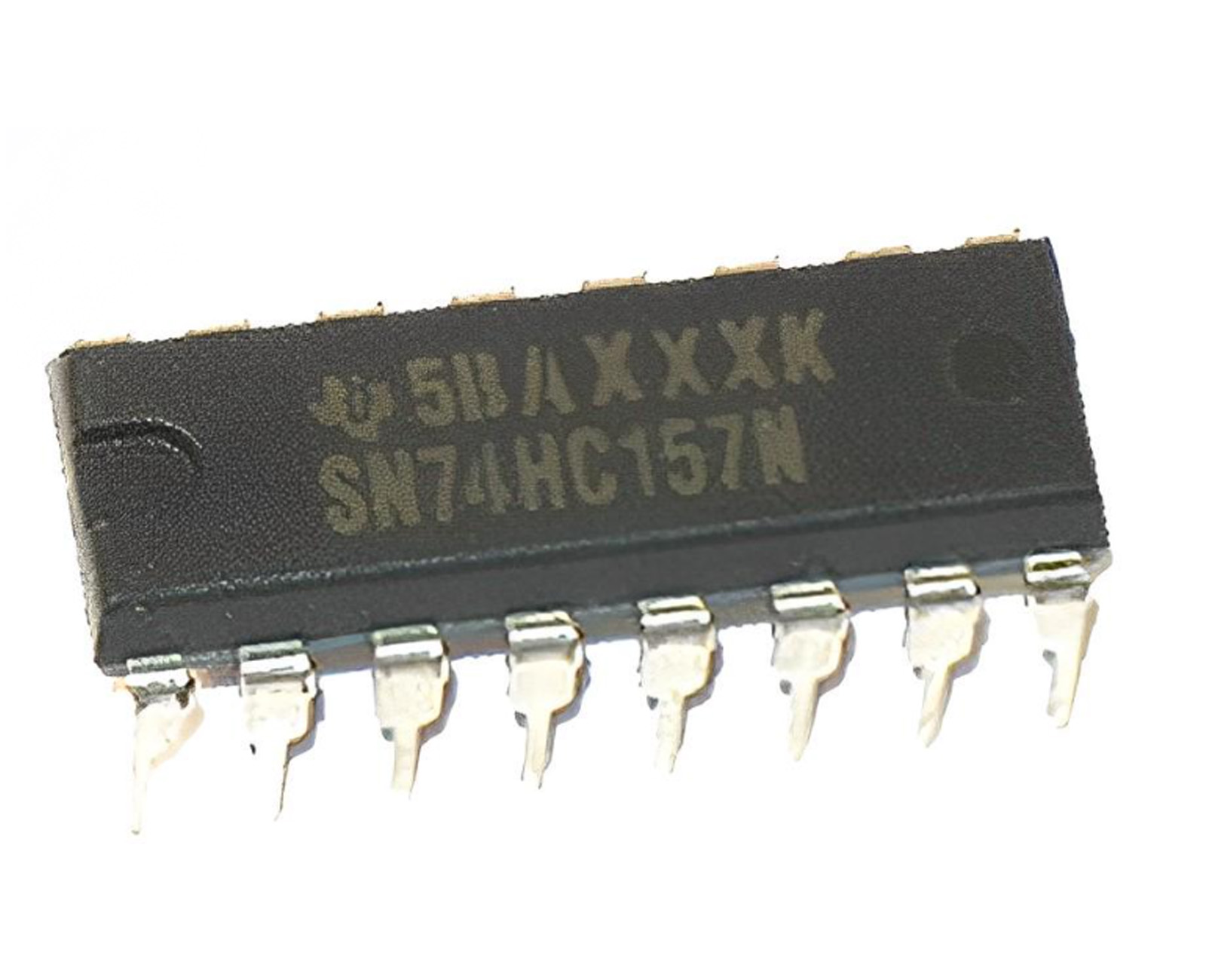
Multiplexer Integrated Circuit
A multiplexer (MUX) is used to select a signal from multiple inputs and output it.
Main features and applications
Multiplexer Integrated Circuits Related Technologies
Selection Logic
Realizes arbitrary bit-width data selection, such as 4:1 or 8:1 multiplexers.
Applications are Data Multiplexing and Bus Control.
Delay Optimization
Improves signal switching speed by reducing the Propagation Delay for High-Frequency Communication.
Related Models
CD4051: 8-channel analog multiplexer for signal switching and sensor applications.
74HC157: 4-channel 2:1 multiplexer for digital signal routing.
SN74LV4052A: Dual 4-channel analog multiplexer supporting wide voltage range for audio and video switching.
2. Analog Integrated Circuits
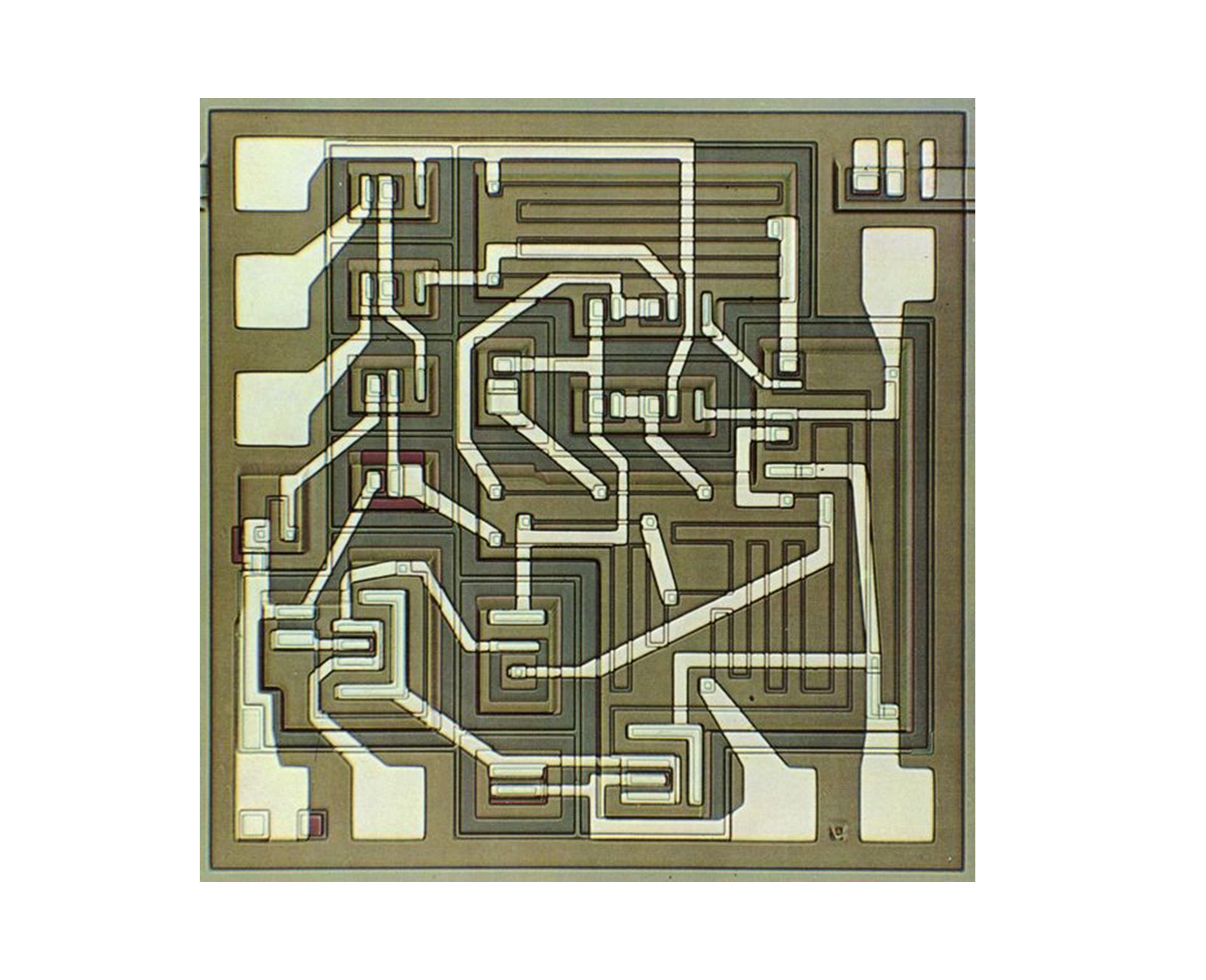
Analog Integrated Circuits
Analog Integrated Circuits are used to process continuous analog signals. They are capable of processing high-precision analog signals in real-time systems.
Main features and applications
Analog Integrated Circuits Related Technologies
Low-Noise Design
Improves signal processing quality by suppressing Thermal Noise and Flicker Noise.
High Bandwidth Design
Realizes signal amplification and filtering over a wide frequency range, commonly used in Hi-Fi Audio and video signal processing.
Related Models
LM741: General purpose operational amplifier for audio signal processing and basic amplification applications.
TL072: Low Noise Dual Operational Amplifier for High Fidelity Audio Devices.
LM358: Dual operational amplifier, commonly used in low power and embedded system designs.
2.1 Battery Charger Integrated Circuit
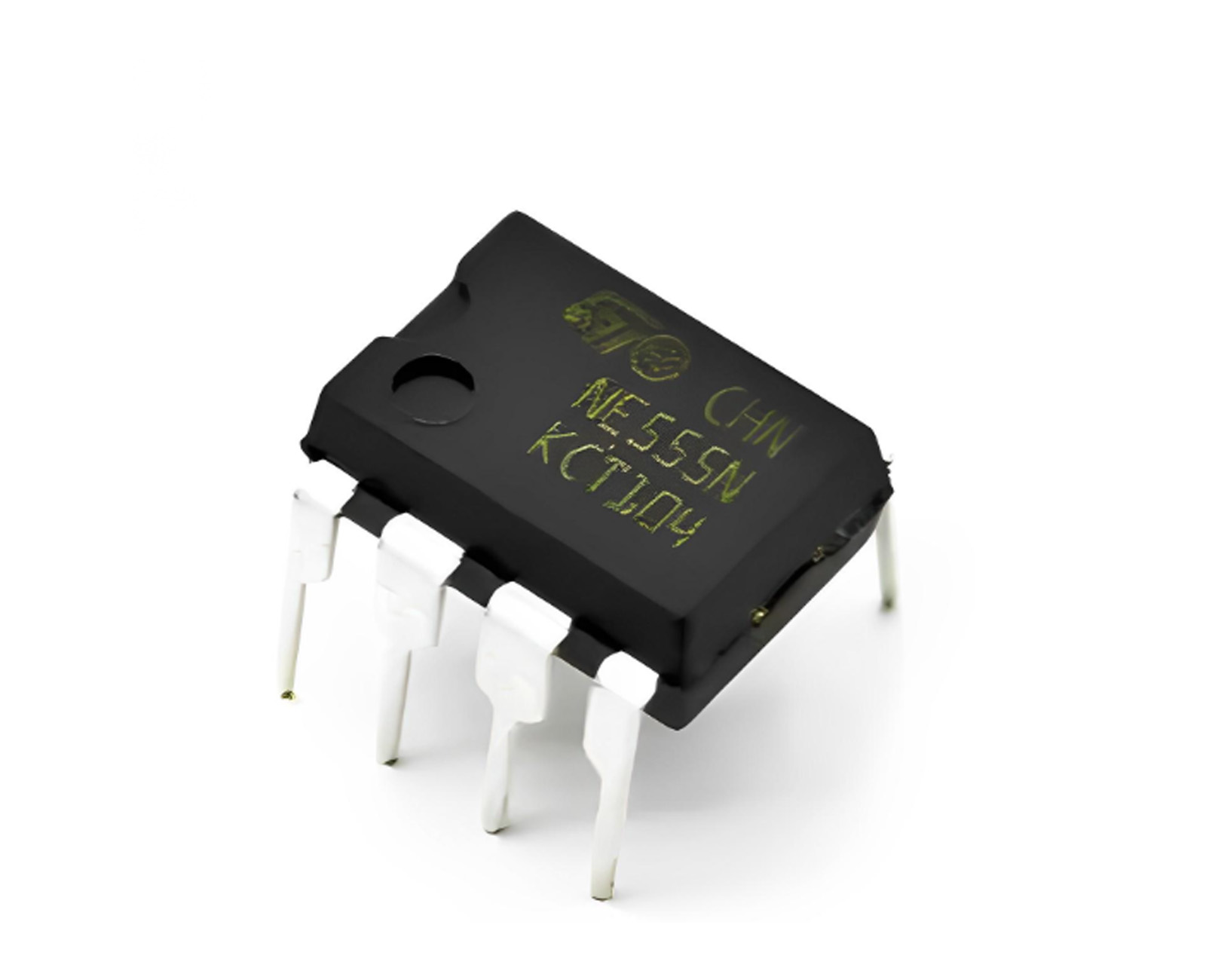
Battery Charger Integrated Circuit
Battery Charger ICs are used to manage the charging process of a battery to ensure that the battery is charged under safe and efficient conditions. They typically integrate features such as battery management, overcharge protection, current and voltage regulation.
Main features and applications
Battery Charger Integrated Circuits Related Technologies
Multi-Stage Charging
These include Constant Current Mode, Constant Voltage Mode and Trickle Mode.
Dynamically adjusts the charging rate to optimize Battery Longevity.
Battery Protection Mechanism
These include OVP (Over-Voltage Protection), OCP (Over-Current Protection) and Short-Circuit Protection.
Related Models
TP4056: Single-cell lithium battery charge management chip, support USB power supply.
BQ25895: Multi-Cell Li-Ion Battery Charger IC with Integrated Boost Function for Mobile Devices
MAX17320: High-precision battery management chip, supports multi-cell Li-ion battery protection and charge management.
2.2 Power Integrated Circuit
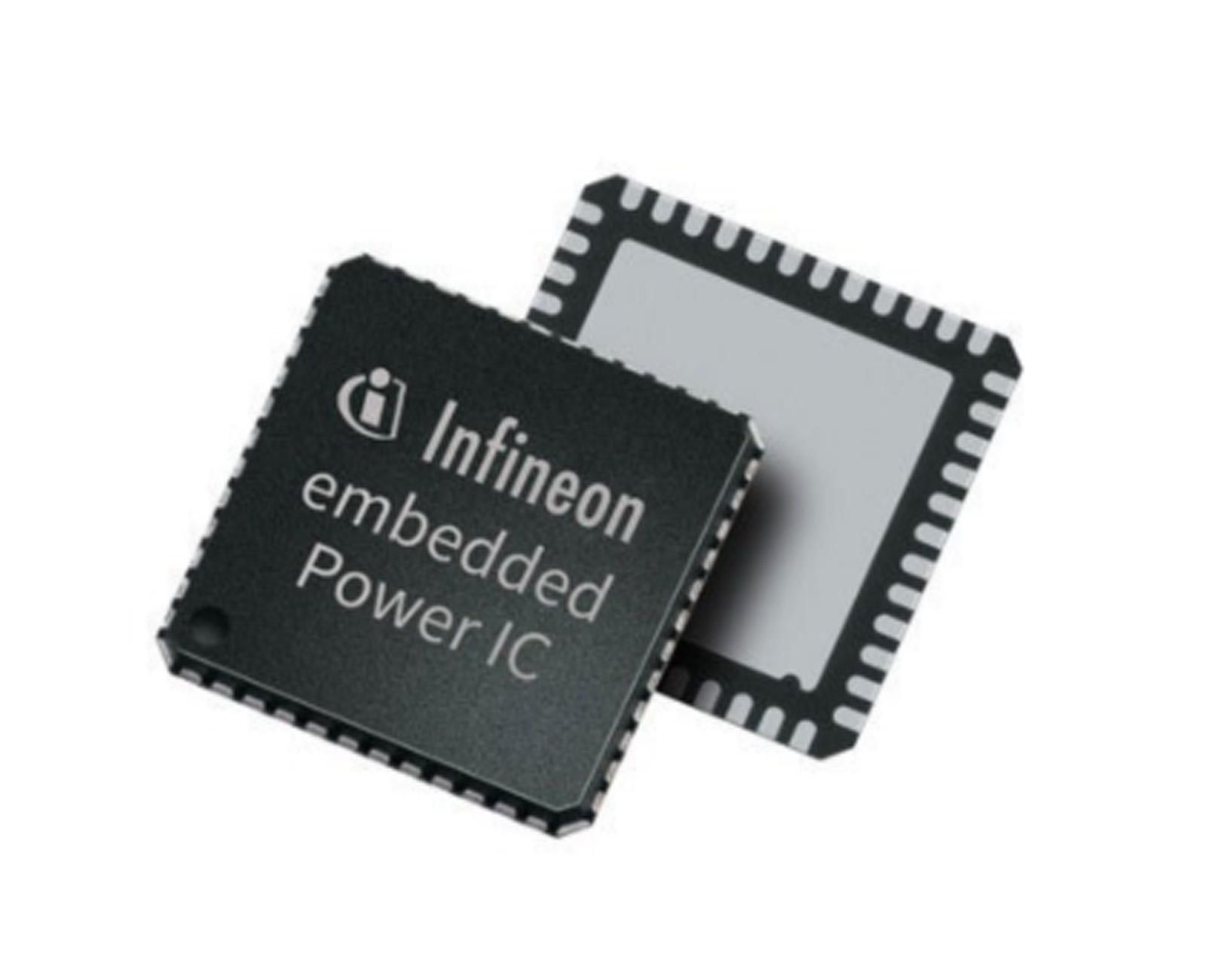
Power Integrated Circuit
Power Integrated Circuits are used to control and regulate power transmission. Power Integrated Circuits typically have high power handling capabilities and high efficiency for application scenarios with high power requirements.
Main features and applications
Power Integrated Circuits Related Technologies
Switching Power Supply Technology
Switch-mode power supplies provide high-efficiency power conversion by adjusting current and voltage through high-speed switching devices such as MOSFETs.
Includes Buck, Boost and Buck-Boost converters.
Power Factor Correction
Reduces harmonics and improves power supply efficiency by correcting the phase shift between the current and voltage waveforms.
Suitable for use in Power Electronics Devices.
Integrated Power Amplifier
In power integrated circuits, highly integrated power amplifiers can drive high-power loads, reducing system size and increasing overall efficacy.
Related Models
LM2596: Step-down switching regulator for power management and power conditioning.
IRF540N: Power MOSFET for motor drive and high power switching.
TPS5430: Step-Down DC-DC Converter with High Efficiency and Wide Input Range.
3. Operational Amplifier Integrated Circuit
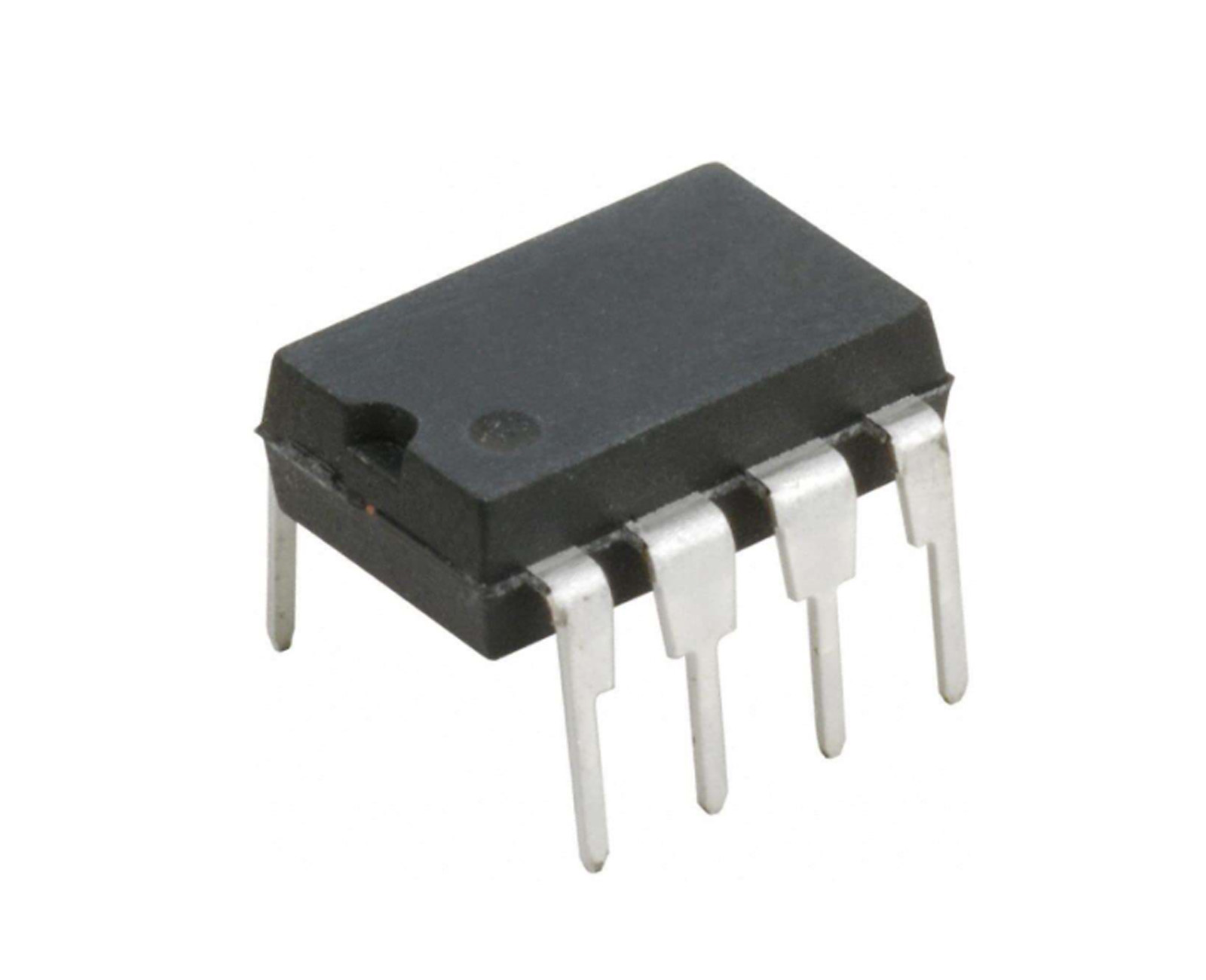
Operational Amplifier Integrated Circuit
An operational amplifier is a key component in analog integrated circuits. The high gain characteristics of operational amplifiers allow them to amplify input signals very accurately.
Main features and applications
Operational Amplifier Integrated Circuits Related Technologies
Differential Amplification
Differential Signal at the input to amplify the difference and suppress the Common-Mode Signals to improve the Common Mode Rejection Ratio of the system.
Widely used in Sensor Signal Processing and audio amplifiers.
Feedback Loop
Operational amplifiers control gain through a feedback loop, and Negative Feedback stabilizes the gain to avoid distortion in the system.
The design of the feedback loop can directly affect the stability, bandwidth, and noise performance of the operational amplifier.
Gain-Bandwidth Product
The bandwidth of an operational amplifier is inversely proportional to its gain, and the gain-bandwidth product is used to characterize its performance limits.
High-bandwidth operational amplifiers support a wider range of signal frequencies.
Related Models
AD8221: Instrumentation amplifier for precision signal processing.
LM324: Low-cost quad op-amp for general-purpose signal amplification.
OPA627: High-precision operational amplifier for laboratory measurement equipment and high-precision circuits.
4. Mixed-Signal Integrated Circuits

Mixed-Signal Integrated Circuits
Mixed-signal integrated circuits combine digital and analog signal processing capabilities and are capable of processing both analog and digital signals.
Main features and applications
Mixed-Signal Integrated Circuits Related Technologies
Analog-to-Digital Converter
Converts analog signals such as audio or sensor outputs to digital signals for digital processing..
Commonly used ADC types include Successive Approximation Register (SAR) type ADCs and Delta-Sigma (ΔΣ) type ADCs
Digital-to-Analog Converter
Converts digital signals to analog signals and is widely used for audio output and video processing.
High-precision DACs (e.g., 12-bit or 16-bit) provide smoother output signals with less distortion.
Mixed-Signal Conditioning
In some applications, signals need to be converted and conditioned between analog and digital processing.
Audio signals need to be converted to analog signals by DACs to drive speakers, while analog signals from sensors need to be converted to digital signals by ADCs for processing.
Related Models
ADS1115: 16-bit analog-to-digital converter (ADC), commonly used for sensor signal acquisition.
DAC0832: 8-bit digital-to-analog converter (DAC) suitable for audio signal output.
MAX11300: Multifunctional mixed-signal IC with integrated DAC and ADC functions for multi-channel signal processing.
5. Memory Integrated Circuit
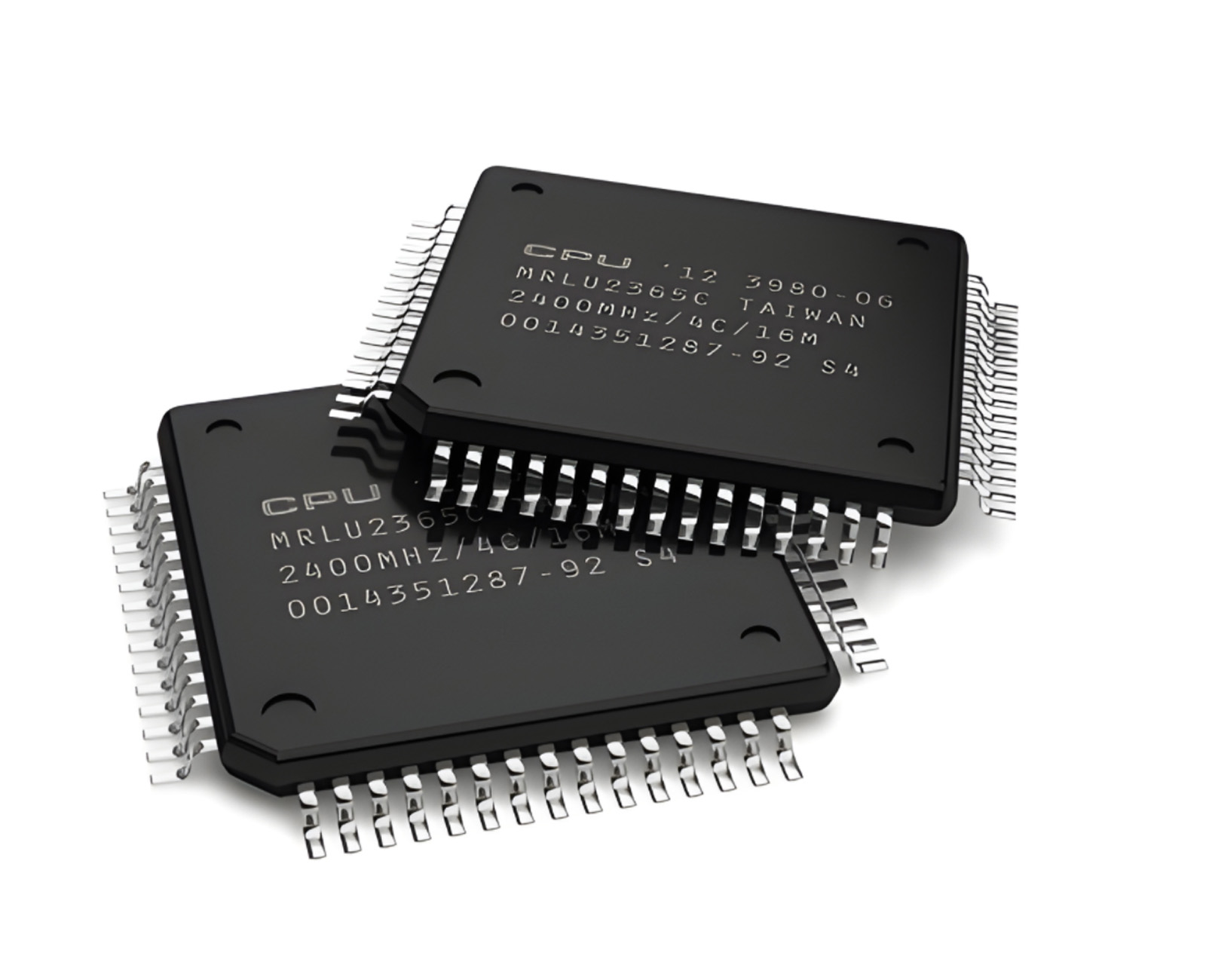
Memory Integrated Circuit
Memory Integrated Circuits are mainly used for data storage and access, and are widely used in computers, mobile devices, embedded systems and other fields. Memory ICs are usually categorized into two main types, static random access memory (SRAM) and dynamic random access memory (DRAM), based on the storage method.
Main features and applications
Memory Integrated Circuits Related Technologies
Dynamic Random Access Memory
DRAM requires periodic Refresh and is suitable for mass data storage.
New DRAMs such as Low Power DDR (LPDDR) are widely used in mobile devices to provide lower power consumption and faster memory access.
Static Random Access Memory
SRAM stores data through internal bistable circuits without refreshing, providing faster access speeds and is suitable for use in cache and embedded systems.
Non-Volatile Memory
These include Flash Memory, EEPROM, and Electrically Erasable Programmable Read-Only Memory, which are used to store data for long periods of time.
Suitable for storing firmware, configuration data, and removable storage devices.
Related Models
Micron MT40A1G8: DDR4 DRAM module for high performance computing and storage applications.
SK Hynix H27QAG8T2CTR: NAND flash chips, widely used in SSDs and embedded storage.
AT24C512: EEPROM chip supporting small data storage and profile management.
6. Communication Integrated Circuit

Communication Integrated Circuit
Communication Integrated Circuits are used to handle the transmission and modulation and demodulation of signals.
Main features and applications
Communication Integrated Circuits Related Technologies
Modulation/Demodulation Technology
A modem converts an analog signal to a digital signal or a digital signal to an analog signal. Common modulation techniques include amplitude shift keying (ASK), phase shift keying (PSK), and quadrature amplitude modulation (QAM).
In High-Speed Data Communication , QAM and PSK are commonly used in satellite communications and fiber optic transmission.
Wireless Communication Protocols
It includes protocols such as Wi-Fi (Wireless Fidelity), Bluetooth, and Zigbee, which are widely used in Internet of Things (IoT) devices and short-range data transmission.
Various protocols optimize data transmission stability by reducing interference through the use of Frequency Hopping techniques.
Related Models
CC3200: Wi-Fi communication module for IoT devices.
NRF52840: Bluetooth 5.0 SoC supporting low-power communication.
BCM2837: Raspberry Pi main control chip with integrated communication and processing capabilities.
7. Photonic Integrated Circuit
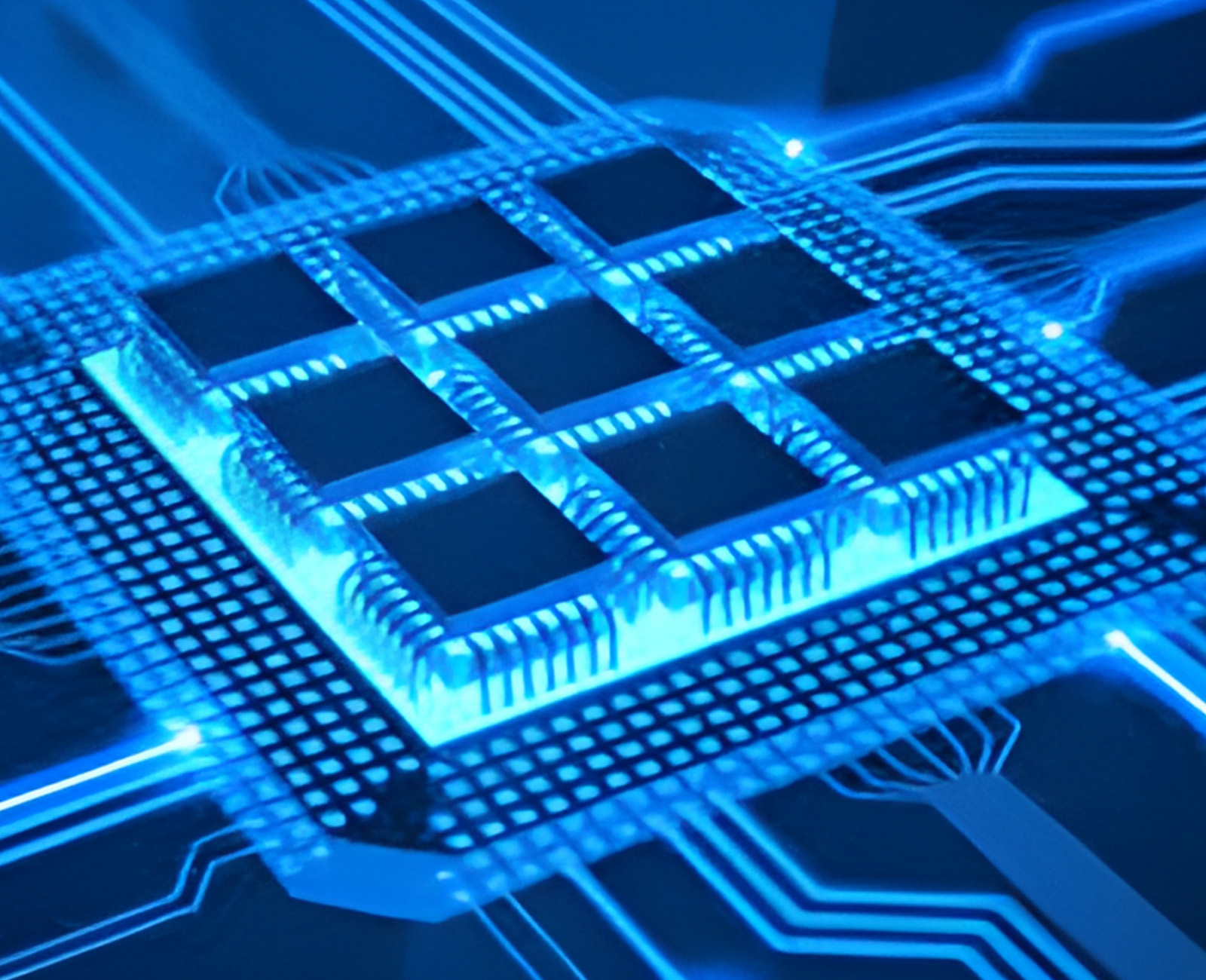
Photonic Integrated Circuit
Photonic integrated circuits are used for the processing and conversion of optical signals, and they are capable of converting and processing optical signals with electrical signals to enable high-speed data transmission and processing.
Main features and applications
Photonic Integrated Circuits Related Technologies
Wavelength Division Multiplexing
High-speed data transmission using optical signals of different wavelengths, suitable for data center.
Optical Modulation Technology
These include phase modulation and polarization modulation.
Related Models
Intel 8500: Optical communication module for data centers and fiber optic communication systems.
Cisco CPAK: Optical transceiver for high-speed data transmission.
IBM Silicon Photonics: High-speed optical communication chips for cloud computing and high-performance computing.
8. Electronic Integrated Circuit
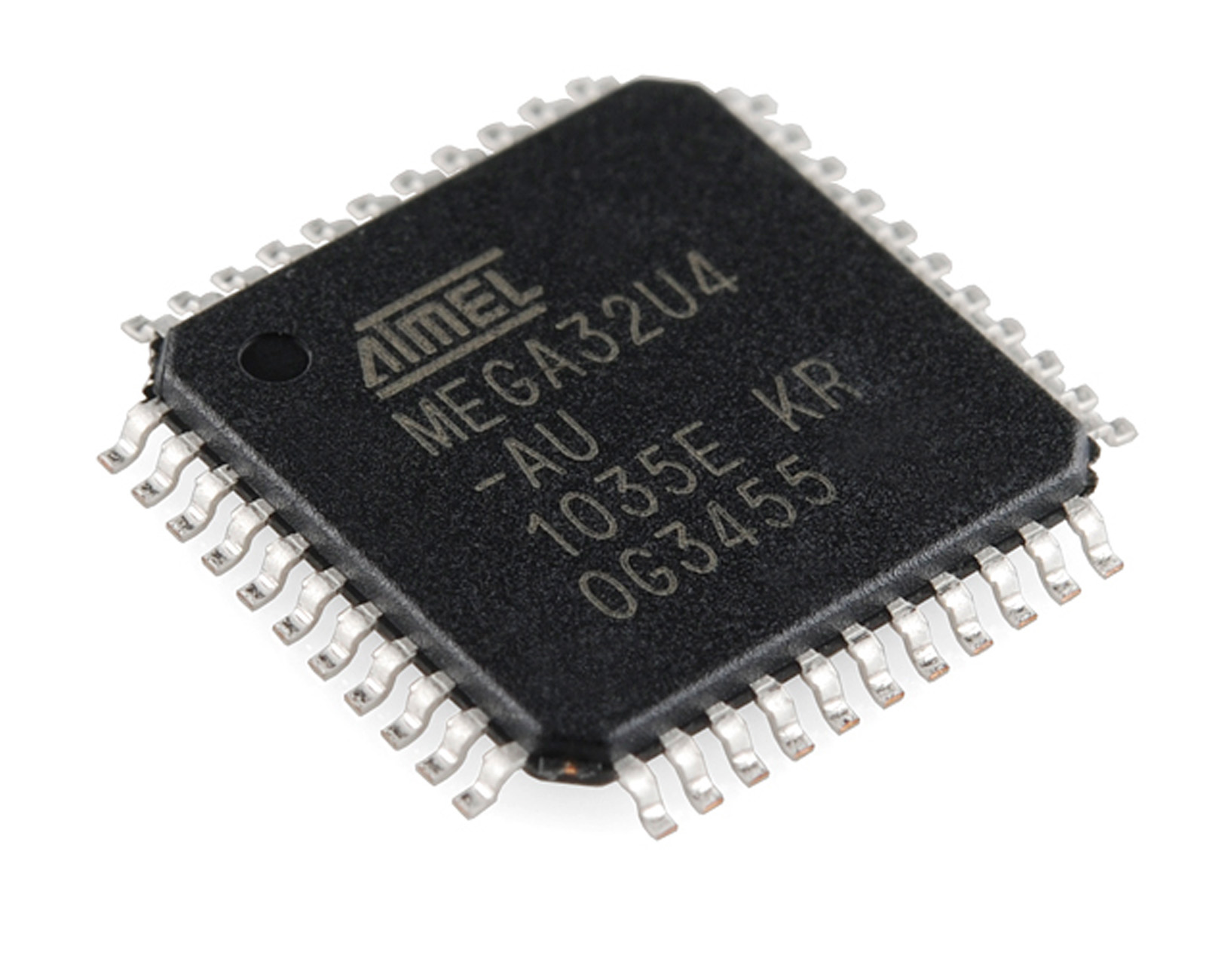
Electronic Integrated Circuit
Electronic integrated circuits is a general term for traditional integrated circuits and covers all types of integrated circuits based on electronics, including digital, analog, and mixed-signal circuits as mentioned in the article above.
Main features and applications
Electronic Integrated Circuits Related Technologies
Very-Large-Scale Integration
Integrates millions of transistors to support complex system designs such as microprocessors, memories and interface circuits.
Advanced manufacturing processes, such as 7nm and 5nm CMOS processes, are used to realize high-performance and low-power designs.
Low Power Design
The power consumption of the chip is reduced through a variety of techniques, including DVFS (Dynamic Voltage and Frequency Scaling) and Sleep Mode.
Reduce unnecessary power consumption with Asynchronous Circuit Design (ACD).
Related Models
NVIDIA Tegra X1: A high-performance chip with integrated CPU and GPU for image processing and edge computing.
ARM Cortex-M7: Highly efficient embedded processor for real-time control systems.
TI TPS65070: Power management IC, widely used in portable electronic devices.
9. Semiconductor Integrated Circuit
![]()
Semiconductor Integrated Circuit
Semiconductor integrated circuits are integrated circuits manufactured on the basis of semiconductor materials (e.g., silicon, germanium, etc.) and cover all ICs manufactured by semiconductor processes.They are commonly used in a wide variety of electronic devices with good performance, low power consumption, and high reliability.
Main features and applications
Semiconductor Integrated Circuits Related Technologies
Process Technology
Includes Photolithography, Chemical Vapor Deposition (CVD) and Ion Implantation to build high performance transistors.
Device Design
MOSFETs (Metal-Oxide-Semiconductor Field-Effect Transistor) and FinFETs dominate low-power and high-performance IC designs.
Related Models
Intel i7-12700KF: High-performance processor with 10nm process.
Qualcomm Snapdragon 8 Gen 2: 5G smartphone processor with AI acceleration support.
MediaTek Dimensity 9200: Flagship mobile SoC supporting advanced gaming and AI processing capabilities.
Sum up
Integrated circuits (ICs) are the core of modern electronic devices and are widely used in various technological fields. Depending on their functions and applications, ICs can be classified into digital, analog, mixed-signal, memory, communication, power management, and other types. Each type of IC has its own unique characteristics and applications, supporting everything from basic signal processing to complex computing and communication functions. In the future, ICs will continue to evolve in terms of low power consumption, high performance, and greater computing power to meet the ever-changing needs of technology.
Frequently Asked Questions
What is an FPGA?
An FPGA is a programmable digital IC used for custom logic and parallel processing.How do operational amplifiers (Op-Amps) work?
Op-Amps amplify the difference between two input voltages, used in signal conditioning and amplification.What is the role of a microcontroller in embedded systems?
A microcontroller is a small computer that controls hardware and processes data in embedded systems.What are power management ICs?
Power management ICs regulate voltage, manage power conversion, and protect against power issues in devices.How does a mixed-signal IC differ from an analog or digital IC?
Mixed-signal ICs handle both analog and digital signals, unlike analog or digital ICs that handle one type of signal.Related Information
-
-
Phone
+86 135 3401 3447 -
Whatsapp





